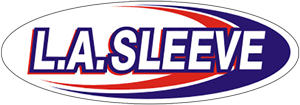is expected to take for warranty work. You might have a friend at a dealership who can share those numbers. But, it's always best to get upfront pricing for an entire job. There are laws in all states governing the practices of both dealerships and home mechanics. You should know them and be sure to ask about "worst case" scenarios.
5. KNOW WHAT'S NECESSARY
Modern valves can last a long, long time, and you don't have to replace t hem nearly as often as your piston. You can check to see if your valves and seats are sealing properly by squirting contact cleaner into the valve ports and seeing if the valves leak. You probably don't need a new cylinder unless the old one has visible wear or damage. Your crank should only be replaced or rebuilt if it develops play. Gears are probably okay unless the motor is jumping out of gear. Modern cams seem to last a very long time.
6. KNOW ABOUT O.E. PARTS
Most dealerships will charge suggested retail for all parts. That can be very expensive. And if you go to a garage mechanic, he has to get parts from a dealer, and he will probably mark them up, which is a normal pract i ce and not at al l unethical. You can save money by knowing where to source your own parts. Internet and mail-order prices are usually much less than walk-in dealer prices. In fact, some dealerships actually charge a different price over the Internet. For most O.E. parts, the cheapest place we have found is Service Honda ([800] 828-5498).
7. KNOW ABOUT AFTERMARKET PARTS
In many cases, aftermarket parts are less expensive than O.E. parts. A Wiseco crank kit, for example, includes a Wiseco crank, plus bearings and seals for less than the price of an original equipment crank. The same is often true of pistons and cams. But there are some O.E. parts that aren't offered by aftermarket sources. Heads, for example, are so complicated to manufacture that only the original maker will produce them.
8. KNOW ABOUT REBUILT PARTS
There are times you should have your original crank, cylinder or head rebuilt, and there are times you should buy a whole new part. L.A. Sleeve will rebuild your original crank for $80 plus parts, which is a good deal. If your head needs new seats and guides, it's tough to beat the price of a brand-new one, especially from Honda. Suggested retail for a TRX450R head is $326. Service Honda sells them for $215. L.A. Sleeve is probably the best place to send a head that needs new seats. They can get the job done for $150 plus parts. Copper beryllium seats cost $65 apiece, but will last much longer than stock. It's your call, depending on how long you plan on riding your ATV. Cylinders are another tough call. Millennium Technologies ([888] 779-6885) or Max Power ([608] 224-2524) will re-plate your cylinder with a much better coating than it had originally. L.A. Sleeve will install ferrous lines for a little less. But the original cost of a Honda cylinder is only $265, and Service Honda will sell one for $175. Cylinder Works ([515] 251-4070) will also sell a new cylinder of its own for less than the O.E. list price.
9. KNOW WHEN TO HOP UP
All that brings us to one of our favorite subjects: hop-ups! There's no better time to search for more power than rebuild time. If you want the very best, then by all means, rebuild the original head with copper beryllium valve seats. It makes perfect sense to wait until that old cylinder is worn out, and then replace it with a bigger one. High-compression pistons cost a little more than standard ones, but the labor cost is the same. And high-performance cams are often less expen- sive than the standard ones. Talk to the people at Webcam ([951] 369-7266).
10. KNOW WHEN TO SELL
There's a lifespan for everything. An old quad motor can very easily cost more to fix than it's worth. If you think you' re getting close to that point, then sell it cheap. Be honest. But if it runs, it's still worth more than otherwise. If it doesn't run, then parting it out is always the best option. Go to eBay and check out the prices that used chassis parts sell for. You'll be amazed.















